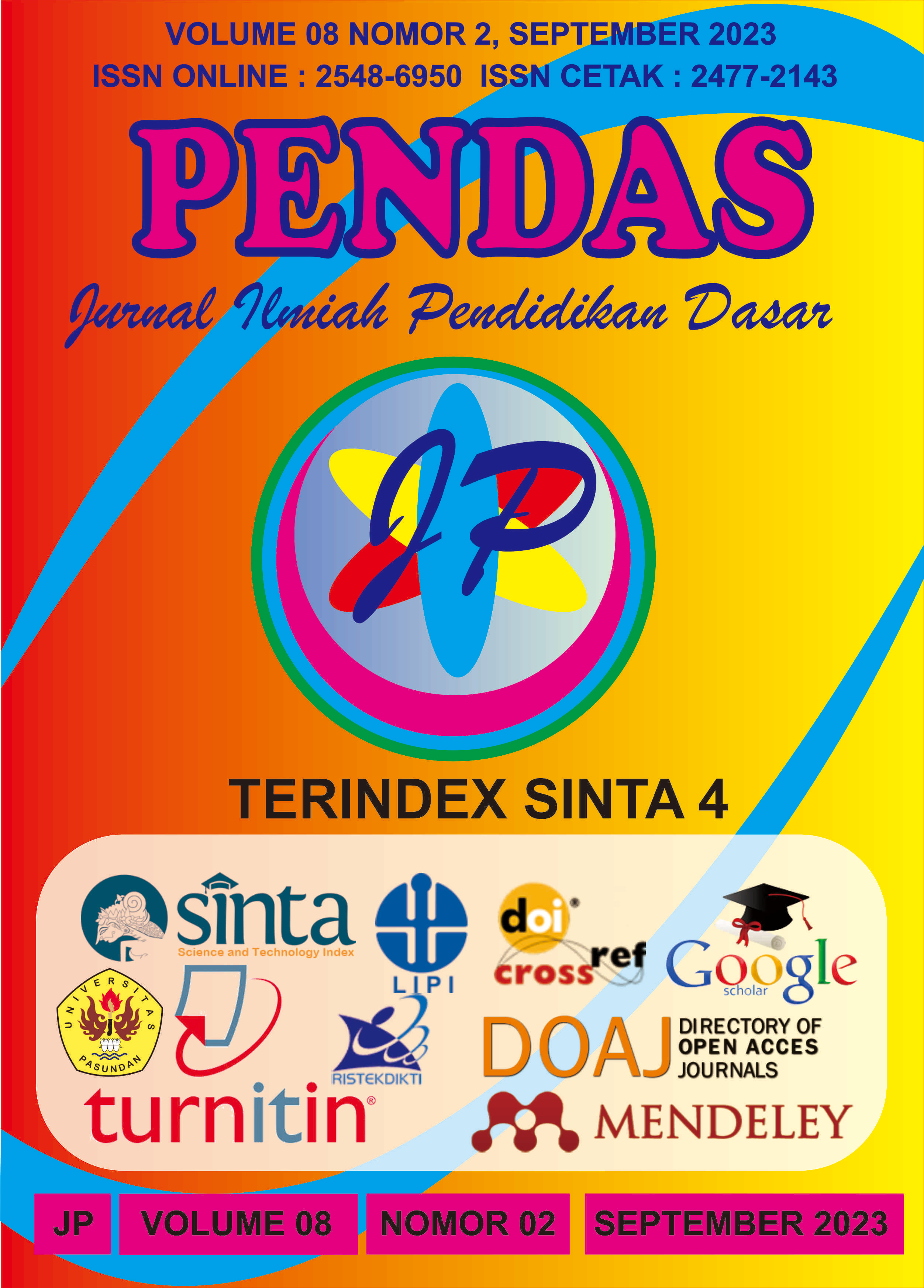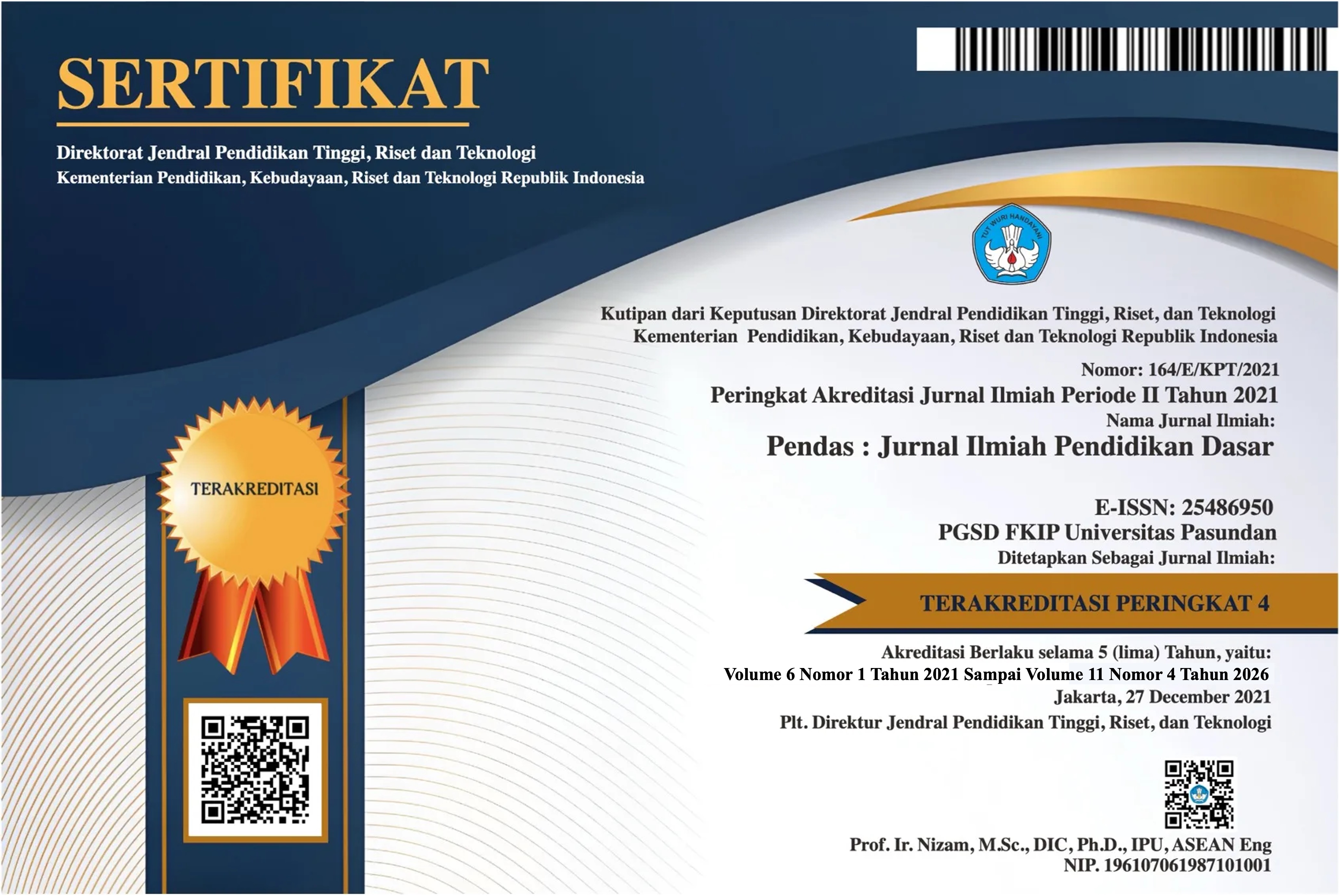PENERAPAN STRATEGI THINK PAIR SHARE (TPS) UNTUK MENINGKATKAN KEMAMPUAN MEMBACA SISWA KELAS 2 DI SD 3 JEKULO
Keywords:
Reading, Think Pair Share (TPS) StrategyAbstract
The main problem in this study is the lack of reading ability of grade 2 students at SD 3 Jekulo. The purpose of this study was to determine the average difference between students' pretest and posttest scores before and after using the Think Pair Share (TPS) strategy on students' reading abilities, and to determine the increase in students' pretest and posttest scores before and after using the Think Pair Share (TPS) strategy on the reading ability of grade 2 students at SD 3 Jekulo. This study uses the type of Pre-Experimental Design research with the One Group Pretest Posttest Design model. In this study, the sample consisted of the entire population of class 2 SD 3 Jekulo. Data collection uses tests namely pretest and posttest. This data analysis is used to analyze quantitative data in the form of student test results processed by T-test and N-Gain using the SPSS 24 statistical application. The results of this study indicate that: (1) think Pair Share strategy has three stages of implementation namely,Think (think),Pair (in pairs), and Share (share). Implementation Think Pair Share Strategy said to be effective because of the average difference between the pretest and posttest scores students before and after the implementation of the Think Pair Share (TPS) strategy on the reading ability of 2nd grade students at SD 3 Jekulo, (2) the average N-Gain score is 0.64 with a percentage of the N-Gain score getting 64% which shows the interpretation of the effectiveness of the Think Pair Share (TPS) strategy in improving students' reading skills can be categorized as quite effective. Therefore, there is effectiveness in implementing the Think Pair Share (TPS) strategy to improve the reading skills of grade 2 students at SD 3 Jekulo.Downloads
References
Adit, A. (2021). Praktisi pendidikan: Begini cara menyiasati learning loss. Kompas. https://edukasi.kompas.com/read/2021/09/06/150214471/praktisi-pendidikanbegini-cara-menyiasati-learning-loss?page=all#page2
Asmaryadi, A. L., Nazurty, Muazza. (2021). Studi Strategi Guru Kelas Dalam Meningkatkan Kemampuan Membaca Permulaan Pada Proses Pembelajaran Daring Kelas Rendah SDIT Cahaya Hati. Jurnal Pendidikan Tematik, 6(2), 47–61.
Caesaria, S. D. (2021). Pakar linguistik UGM: Kemampuan siswa menurun selama belajardaring.Kompas. https://edukasi.kompas.com/read/2021/02/27/165009971/pakar-linguistikugm-kemampuan-siswa-menurun-selama-belajar-daring?page=all#page2
Cahyono, A., Murtono, Suad. (2022). Pengaruh Model Think Pair Share Dan Mind Mapping Terhadap Keterampilan Menulis Eksposisi Ditinjau Dari Kemandirian Belajar Siswa. Universitas Muria Kudus.
Damayanti, A., Pratiwi, I. A., & Ismaya, E. A. (2020). Peningkatan Kemampuan Berpikir Kritis Melalui Model Think Pair Share Berbantuan Permainan Engklek pada Siswa Sekolah Dasar. Jurnal Pendidikan, 11(2).
Djalal, F. (2017). Optimalisasi Pembelajaran Melalui Pendekatan, Strategi, dan Model Pembelajaran. Jurnal Dharmawangsa, 2(1), 31–52. https://jurnal.dharmawangsa.ac.id/index.php/sabilarrasyad/article/view/115/110
Gerlach, V.S. & Ely, D.P. (1980). Teaching and Media a Systematic Approach. New Jersey: Prentice Hall.
Kartiko, A., Listyarini, I., & Sukamto, S. (2020). Keefektifan Model Think Pair Share Berbantu Media Kartu Gambar Terhadap Kemampuan Membaca Kelas I SD. Jurnal Ilmiah Pendidikan Profesi Guru, 3(3), 548. https://doi.org/10.23887/jippg.v3i3.29468
Lie. (2013). Cooperative Learning: Mempraktekkan Cooperative Learning di Ruang-ruang kelas. Jakarta: Gramedia.
Majid, A. (2016). Strategi Pembelajaran. Bandung: PT Remaja Rosdakarya.
Mullis, I. V. S., Martin, M. O., & Sainsbury, M. (2016). PIRLS 2016 Reading Framework. PIRLS 2016 Assessment Framework, 13–31. https://timssandpirls.bc.edu/pirls2016/downloads/P16_FW_Chap1.pdf
Putri, R. E., Karma, I. N., & Husniati, H. (2022). Strategi Guru Kelas dalam Mengembangkan Keterampilan Membaca pada Peserta Didik di SDN 30 Ampenan. Jurnal Ilmiah Profesi Pendidikan, 7(4), 2173–2180. https://doi.org/10.29303/jipp.v7i4.930
Rahayu, Ayudia. (2019). Penerapan Model Pembelajaran Think Pair Share (TPS) untuk Meningkatkan Kemampuan Penalaran Matematis Siswa Sekolah Dasar. Jurnal Pendidikan Sekolah Dasar, 2(1), 12-22.
Rondli, W. (2022). The Effect of Think Pair Share (TPS) Learning Model on Understanding Pancasila Values in Grade VI Elementary School. Universitas Muria Kudus.
Samroni, S. M., Santoso, Utaminingsih, S., Amitabh, V.D. (2021). Effect of PBL and TPS Learning Models on The Quality of Learning. Asian Pendidikan, 41-46.
Shoimin, Aris. (2014). 68 Model Pembelajaran Inovatif dalam Kurikulum 2013. Yogyakarta: Ar-Ruzz Media.
Slameto. (1991). Proses Belajar Mengajar dalam Sistem Kredit Semester. Jakarta: Bumi Aksara.
Sugiyono. (2017). Metode Penelitian Pendidikan Pendekatan Kuantitatif, Kualitatif, Dan R&D. 26th ed. Bandung: Alfabeta.
Sumantri, Mohammad Syarif. (2015). Strategi Pembelajaran Teori & Praktik di Tingkat Pendidikan Sekolah Dasar. Jakarta: PT. Rajagrafindo Persada.
Sunday Ugwuanyi, C., Christopher Nduji, C., Christian Elejere, U., & Ekene Omeke, N. (2020). Effect of Flipped Classroom and Think Pair Share Strategy on Achievement and Retention Among Senior Secondary School Physics Students. International Journal of Sciences: Basic and Applied Research (IJSBAR) International Journal of Sciences: Basic and Applied Research, 52(2), 136–148.
Downloads
Published
Issue
Section
License
Copyright (c) 2023 Pendas : Jurnal Ilmiah Pendidikan Dasar

This work is licensed under a Creative Commons Attribution 4.0 International License.



















